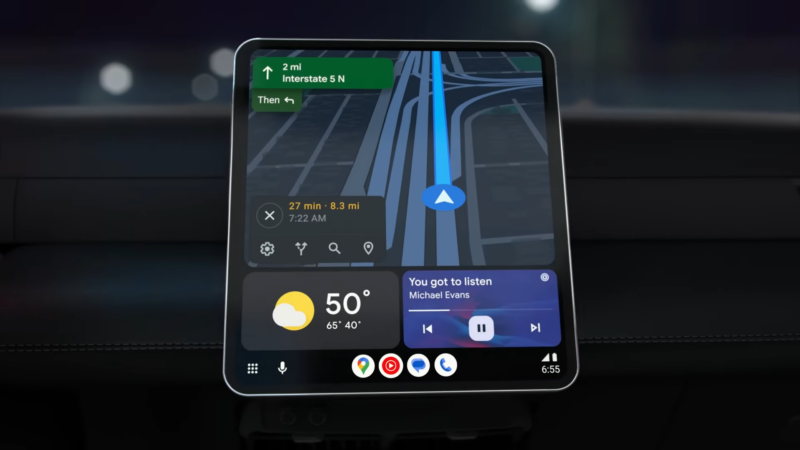
Android Auto and its big brother, Android Automotive OS (AAOS), are getting a little better at playing the role of a real computer. As noted by SmartDroid.de, the home screen interface will now start flagging apps that only run in parked mode. They get a small “P” badge at the top of the icon. Previously, this would only show an error message after you opened it.
Android Auto and Android Automotive OS are Google’s in-car interface and mostly share the same apps. Android Auto powers your phone, which plugs into the car and takes over the dashboard screen, replacing (for a while) the built-in infotainment system. Android Automotive OS takes Google’s “infotainment replacement” interface and builds it directly into the car as the only infotainment system. With Android Automotive OS (AAOS), car companies can deliver Android as an OS for cars, just as phone manufacturers deliver Android as an OS for phones. The OS is removable, so it often ends up looking different, but that was the idea it started with.

One of the frustrating things about both versions of Android Auto is that you have a big, powerful car screen in front of you that could to be more useful than the telephone, but it never was. Android Auto and its apps assume you’re hurtling down the road at 60 mph while using them, and rarely take into account the possibility that you’ll be stopped at a red light or in a park, or that the touchscreen is being used by a passenger. This means that for most apps, security locks are always on, so you’re only allowed to see nine Google Maps results and you can never see your entire music library, among other restrictions.
Teslas have access to the entire Steam library of games when parked, but Android cars can’t even use Google Maps very well. In particular, AAOS knows what speed you are in and knows if there is anyone in the passenger seat. We’ve even seen cars take the step of displaying a “security locks disabled” message when you have a passenger, but the obvious next step of opening the app interface for more complex tasks never actually happens, and then you get to your phone.
Typically, all Auto and AAOS apps are labeled as “Distraction Optimized,” meaning they’re designed for use while driving. You don’t know have to do so, and both interfaces support the concept of “parked” applications. However, almost no one uses the feature (our last AAOS app count was “37”, so almost no one uses anything, really), and the primary example of an installable app is Google’s GameSnacks, which is just a few simple games for your car.
Google is working to make AAOS more functional while parked. The company now has a parking-only version of Chrome. Many Android Automotive OS cars like the Polestar 2 have fancy iPad-like screens attached to the center console, and using Chrome to check where you want to go or maybe order takeout is a great case in point. The car is also starting to get video apps like PBS KIDS and Crunchyroll, though there’s still no YouTube app. Starting to mark apps as “parked only” is the smallest small step in making Google’s car computer a little more useful. Let’s hope there’s more focus on bringing the usual “Android” power back to Android Automotive.